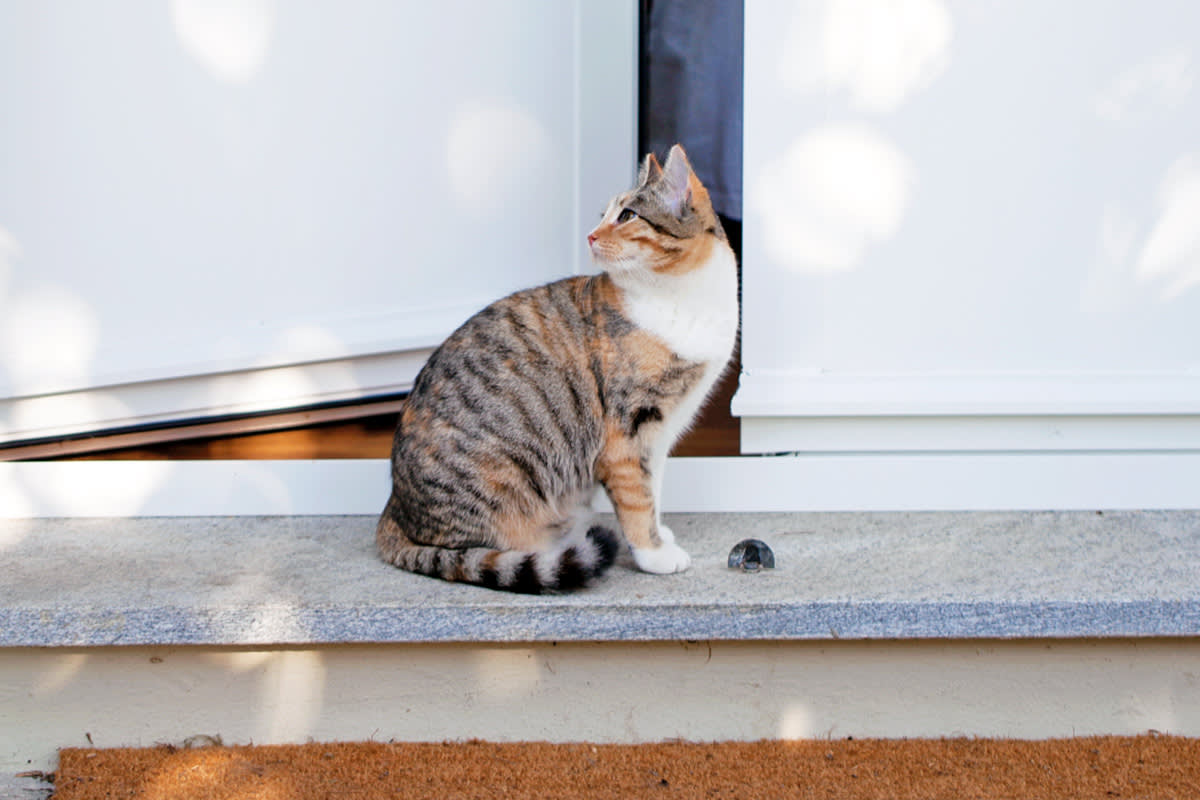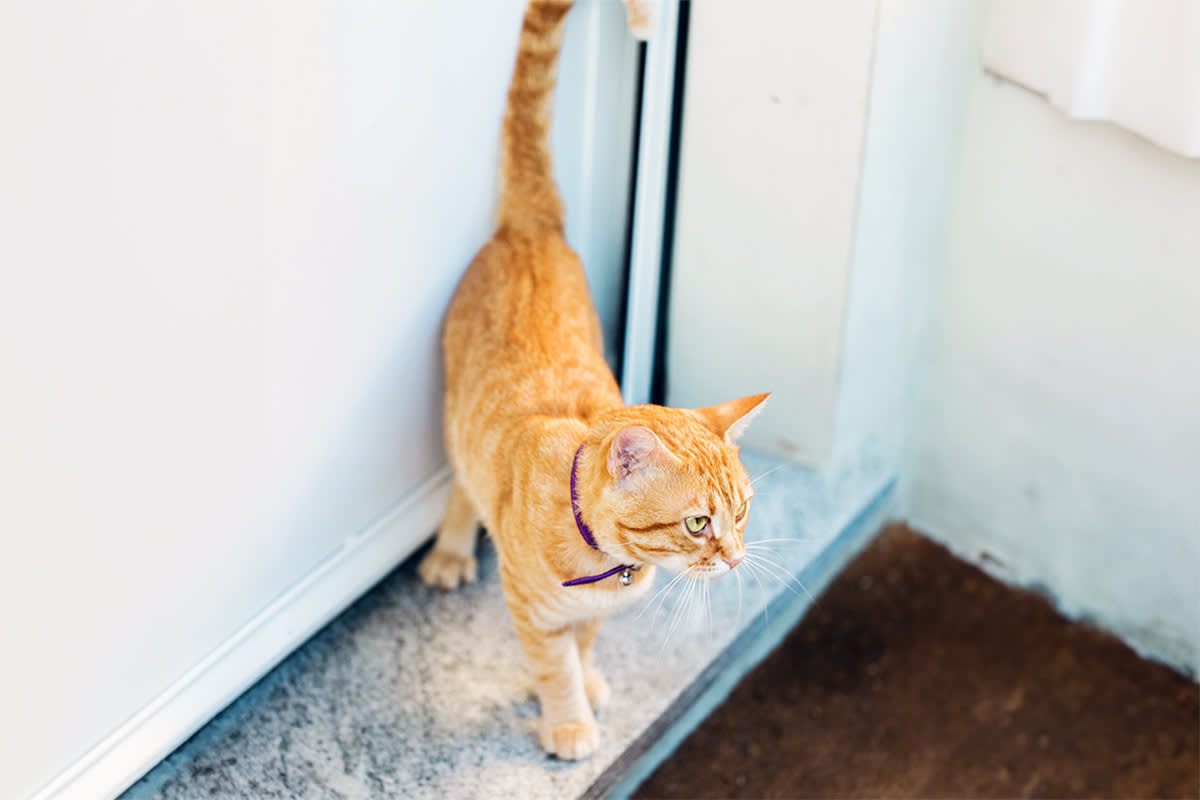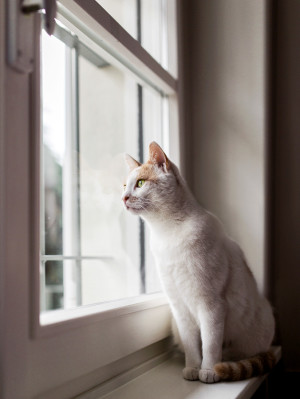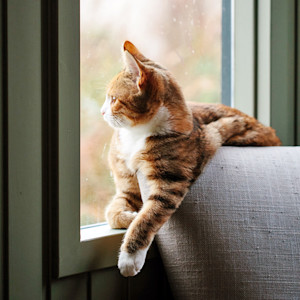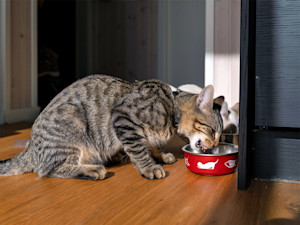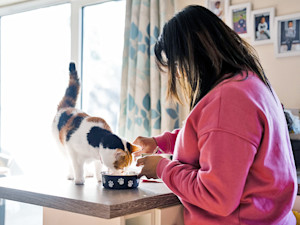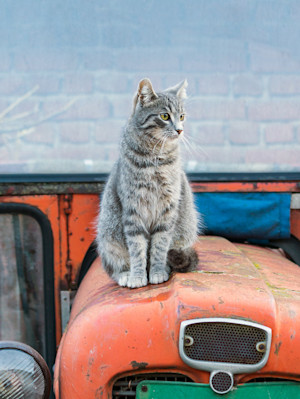Can You Turn an Outdoor Cat Into an Indoor Cat Without Making Them Miserable?
Bird flu experts say your outdoor cat should stay inside, but is that even possible?
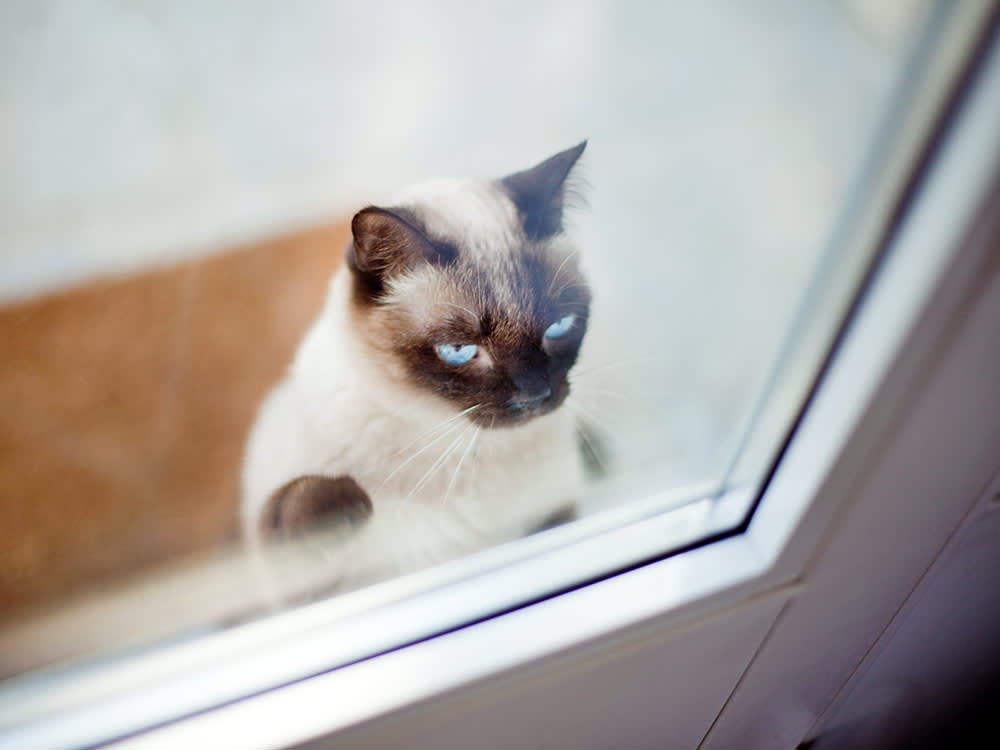
Share Article
If you have an outdoor cat, then you might be used to finding gory gifts around your home: a decapitated mouse tucked inside your shoe, a limp lizard lying on your pillow, a few blood-tinged feathers underneath your desk chair. And while cleaning up these well-intentioned presents is a nuisance, it’s usually just annoying, rather than something to worry about. You might even take pride in the fact that your cat is such a skilled hunter. What a sweet and loveable little killer!
These days, though, if your cat brings a bird inside (or more likely, the remains of a bird), you might feel more alarmed than charmed: News about bird flu outbreaks across the U.S. has parents of outdoor cats on high alert. Although the Centers for Disease Control and Prevention (CDC) says the current risk to the public is lowopens in new tab, the president-elect of the American Veterinary Medical Association (AVMA), Dr. Michael Q. Bailey, told NPRopens in new tab that cats who spend time prowling the great outdoors on their own could be susceptible to the avian fluopens in new tab, also known as H5N1.
That’s because cats may hunt down songbirds or rodents who are infected with bird flu, and it’s possible that this could result in outdoor cats contracting the disease. Bird flu in cats can cause dizziness and seizures, as well as respiratory symptoms, such as sneezing, coughing, a runny nose, and difficulty breathing, according to the AVMAopens in new tab. This year, it has already killed cats who have contracted the virus from eating raw food.
The CDC says it’s possible (though unlikely) that a cat with bird flu could pass it to humansopens in new tab or other pets they come into contact with. Per The New York Times, early this month, the CDC publishedopens in new tab, then unpublished, data that showed cats had infected humans in their household with the virus. To minimize risk for everyone, the AVMA recommends keeping cats indoors, to keep them safe from possible exposure to bird flu.

However, that’s not the only reason to keep your cat inside, says veterinarian Dr. Preston Turanoopens in new tab. He cites cat fights, wild animal attacks, and being hit by a car as very real dangers of an outdoor lifestyle, as well as the risk of H5N1. “If your cat has been living outdoors, and you are concerned about their safety, you can transition them to a happy indoor life,” he says. “Many stray cats have transitioned happily to the indoor lifestyle, so don’t worry; it can be done.”
Dr. Liza Cahn,opens in new tab a veterinary consultant for Embrace Pet Insuranceopens in new tab, Dr. Turano echoes. “An indoor-only lifestyle is the safest choice you can make for your cat to help protect them against trauma, infectious disease, and parasites,” she says. But if your cat is used to roaming free, how can you help them adjust to staying inside?
So, how do you convert an outdoor cat into an indoor one? Start small
If your cat is a true outdoor cat — as in, they do not come inside at all, or only rarely — then you’ll want to confine them to “a single quiet room” in the beginning, Dr. Turano says. “Your cat will need a few days to decompress from the changes, and this is normal.” You can keep supplies simple during this transition time.
“There should be bedding, food, water, and two litter boxesopens in new tab to encourage use, as well as a space for hiding,” Dr. Turano says. “Once they are eating, drinking, and using the litter box, you can start to let them out and about in the house.” Dr. Cahn adds that if you are bringing a previously outdoor cat into your home, you’ll also need to schedule a vet visit to make sure they are up to date on vaccines, FIV/FeLV testing, and parasite prevention.
Equip your space.
When your cat has access to your entire home, make it as feline-friendly as possible. Besides the basics listed above, you’ll want to provide plenty of places for your cat to perch, climb, and watch the outside world from indoors. “Cats love to observe their surroundings and rest from a secure, elevated position,” Dr. Turano says. “You will need to place scratching posts in the areas they are going to frequent, as well.”
Keep an eye on escape routes.
Bringing your cat inside is one thing — keeping them there is another. “Your cat may still have a strong desire to get outside, so make sure that your home is safe and secure by keeping doors and windows closed,” Dr. Cahn says. If you’re not used to worrying about your cat running out the door, this may be an adjustment. Make sure everyone who lives in your home knows to watch out for the cat when they’re entering or exiting, and not to linger in open doorways.
Make it fun for your cat to be inside.
“The great outdoors is an exciting place for cats, but by providing ample opportunities for physical and mental enrichment, you can also make your home their happy place,” Dr. Cahn says. “Set aside time for interactive play each day, consider a toy rotation to keep things interesting, and make sure to provide your cat with areas for climbing, perching, scratching, and exploration.” Dr. Cahn also recommends making use of interactive feeding toysopens in new tab as well. This will help keep your former hunter at a fighting weightopens in new tab.
Give it time.
How much time? That depends on the cat. “Some transitions will be quick, and others may take more time and patience,” Dr. Turano says. “The initial transition can be stressful, and most cats will need a couple of days to a couple weeks to fully decompress.
Be sure to use positive reinforcement, a calm soothing voice, and plenty of treats during this transition.” If you’re worried that your cat is suffering from being kept inside, let Dr. Turano put your mind at ease. “It is not unhealthy to transition a cat to the indoors,” he says. “In fact, cats are much safer indoors, and ironically, it helps prevent loss of local bird life.”
Transitioning your cat from outdoor to indoor life may seem daunting, but Dr. Cahn says it often goes smoothly, “as long as you put in the work and have patience with them.” But because every cat is different, there are no guarantees. “All cats are individuals. If your cat is truly distressed or not adjusting to an indoor-only lifestyle despite your best efforts, you may need to consider their quality of life and the risks versus benefits of remaining an outdoor cat,” she says.
“If, during the transition, your cat stops eating or is not keeping up with their grooming, it is best to contact your veterinarian to rule out any underlying medical concerns,” Dr. Turano adds.
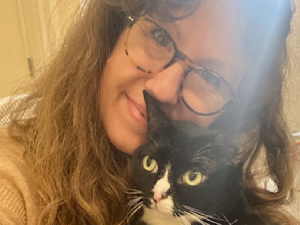
Elizabeth Laura Nelson
Elizabeth Laura Nelson is a writer and editor based in Brooklyn, New York, whose work has appeared in The New York Times, Jenny, Best Life, YourTango, Elite Daily, and more. She focuses her work on relationships, health and wellness, midlife, and lifestyle. As a child, Elizabeth was scared of cats (claws and teeth, yikes) but she has since gotten over her fear and now shares her home with three sweet and gentle feline companions who make life better (and cuddlier) every day.
Related articles
![White Cat And His Reflection On Window While He Stares At The Outside.]()
Your Cat Wants to Go Outside More Than Anything — Should You Let Them?
The pros and cons of letting your cat explore the neighborhood (and beyond).
![Cute cat looking outside the window.]()
Cats Should Be Kept Indoors to Avoid Bird Flu, Veterinarians Warn
The recommendation comes after multiple cats passed away from the virus.
![Two more Oregon cats die from bird flu virus in raw food.]()
2 Oregon Cats Died After Contracting Bird Flu From Raw Food
A recall has been issued for the contaminated product.
![Woman feeding her cat in the kitchen at home.]()
5 Cats Have Reportedly Been Infected with Bird Flu from Raw-Food Brand
Here’s everything you need to know.
![Outdoor cat sits on a tractor outside.]()
Cats May Become Bird Flu Carriers, New Study Warns
With bird flu cases on the rise, scientists are worried the virus could mutate.
